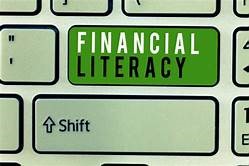By Hon. Curtis Loftis, State Treasurer of South Carolina
March 23, 2021
Where did you learn about personal finance? Did a patient parent explain the difference between spending for what you need versus what you want? Or perhaps a dedicated teacher helped you understand the complexities of saving and investing in the modern world. If you did have someone teach you financial literacy, you’re one of the lucky ones. Most of us learned what we know about 401ks, 529 plans, taxes, and household budgets from the school of hard knocks.
 In 2019, a survey of over 30,000 college students reported that only 35% had ever taken a personal finance class. And when asked to choose between a variety of college challenges such as coursework and time management, 53% said the challenge they were least prepared to face was managing money.
In 2019, a survey of over 30,000 college students reported that only 35% had ever taken a personal finance class. And when asked to choose between a variety of college challenges such as coursework and time management, 53% said the challenge they were least prepared to face was managing money.
The good news is studies show that financial literacy education does make a difference. In fact, a study of financial health outcomes found that adults who had taken a financial education class in high school enjoyed better credit scores than their peers. Unfortunately, of the 45 states that include personal finance in their K-12 standards, only 21 actually require financial education to be taught, and only six require students to take a comprehensive personal finance class.
When schools do offer financial education, have teachers received the training needed to teach these important courses? It’s a crucial question. A 2018 study concluded that “well-funded teacher preparation may be the key to successfully implementing financial education programs.”
Finding Solutions
The first step in advocating for financial literacy classes and the educators who teach them is finding like-minded support. As a parent, you can contact your school and leaders in state and local government. You can also help recruit interested businesses and non-profits to collaborate with your school.
In January of 2020, South Carolina’s Future Scholar 529 College Savings Plan teamed up with SC Economics, a nonprofit dedicated to economic education, and launched the South Carolina Financial Literacy Master Teacher Program. The program provides participating teachers with specialized training and curriculum resources and incentivizes educators to teach professional development workshops to their colleagues in K-12 schools.
“Poor financial decisions are a result of not being taught important financial concepts,” said Monica Brisbon, the Program’s 2021 March Educator of the Month. “I enjoy being a Financial Literacy Master Teacher and educating youth to make better financial decisions. Attending workshops has enlightened me on topics that I struggled with as a young adult. I tell my students that had I known then what I know now, I would be in an even better financial position in my life,” she added.
Financial Literacy at Home
You can begin financial literacy education at home. It can be as simple as describing how you approach your own financial obligations and investments. Your age-appropriate conversations won’t need to delve into actual numbers to communicate your values when it comes to money.
Even small children can understand delayed gratification and the need to save for what they want. For older children, weaving information about financial topics such as credit card interest, insurance or taxes into daily conversations will make these subjects feel more familiar so that learning about them is less threatening.
And as soon as your child begins to think about higher education, include college savings in your discussions. If you’ve opened a 529 college savings account, you can both make contributions, check your progress together and marvel at the wonders of compound interest!
About the author
 Curtis Loftis is the State Treasurer of South Carolina. He also serves as the administrator of South Carolina’s Future Scholar 529 College Savings Plan. Visit treasurer.sc.gov or futurescholar.com for more information on ways to save through a 529 plan.
Curtis Loftis is the State Treasurer of South Carolina. He also serves as the administrator of South Carolina’s Future Scholar 529 College Savings Plan. Visit treasurer.sc.gov or futurescholar.com for more information on ways to save through a 529 plan.
